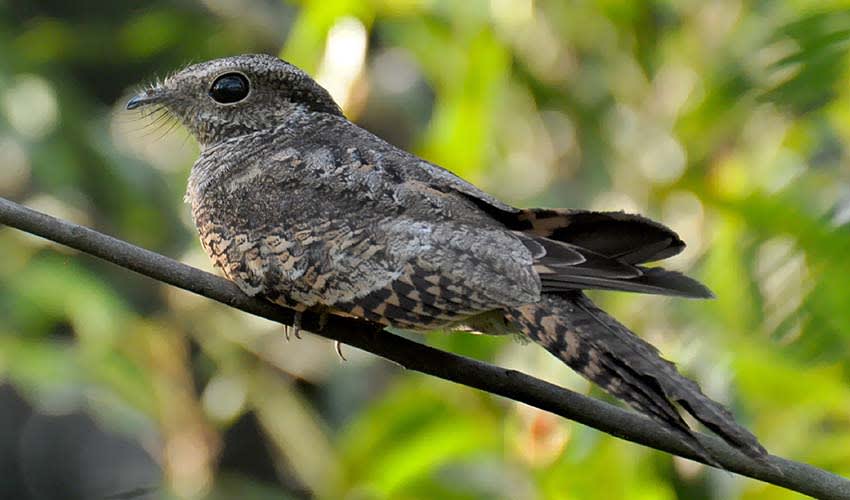Found across parts of South America, especially near rivers, wetlands, and forest edges in countries like Brazil, Peru, Colombia, and Bolivia, this species is part of the nightjar family (Caprimulgidae)—a group of birds known for their twilight activity, silent flight, and insect-hunting skills. Unlike some of its showier relatives, the ladder-tailed nightjar earns its name from the horizontal bars (“rungs”) across its long tail feathers, which give the appearance of a ladder when viewed from behind or in flight.
One of the standout features of this bird is its tail dimorphism between the sexes. Males have a much longer, more strikingly patterned tail with broad white tips on the outer feathers, which they may show off during courtship displays or in flight. Females, on the other hand, are more subtly colored and have shorter tails, which helps them stay well-camouflaged when nesting. Like other nightjars, the ladder-tailed nightjar is most active during dusk and dawn (crepuscular) and spends most of the day completely still, lying flat on the ground or on a low perch, blending in almost perfectly with leaves, rocks, or soil.
Their plumage is a mix of mottled browns, grays, and buffs, allowing them to practically disappear into their environment. They do not build nests—instead, females lay one or two eggs directly on the ground, often on sandbars or gravel near water. The eggs and chicks are so well-camouflaged that they can be nearly impossible to spot unless they move. Both parents are involved in guarding and incubating the eggs, often relying on their stillness and camouflage rather than aggression to avoid predators.
Distribution
 Bolivia
Bolivia Brazil
Brazil Colombia
Colombia Ecuador
Ecuador French Guiana
French Guiana Guyana
Guyana Peru
Peru Suriname
Suriname Venezuela
VenezuelaAnything we've missed?
Help us improve this page by suggesting edits. Glory never dies!
Suggest an editGet to know me
Terrestrial / Aquatic
Altricial / Precocial
Polygamous / Monogamous
Dimorphic (size) / Monomorphic
Active: Diurnal / Nocturnal
Social behavior: Solitary / Pack / Herd
Diet: Carnivore / Herbivore / Omnivore / Piscivorous / Insectivore
Migratory: Yes / No
Domesticated: Yes / No
Dangerous: Yes / No




